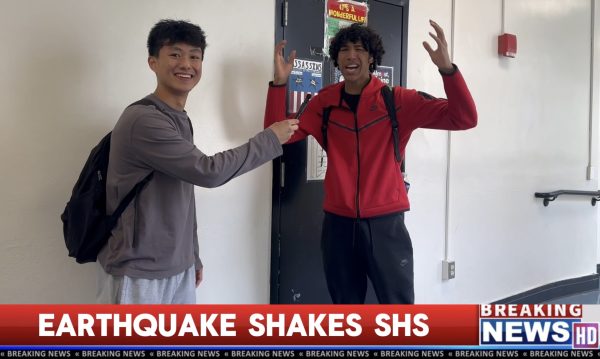Stamford High’s Underground Food Market
April 20, 2018
Throughout every student’s high school career there are a number of struggles ranging from schoolwork to lack of sleep, but one of the bigger issues faced by people in high school is acquiring food. Students are asked to arrive at school by 7:15 a.m. and are not released until 2:05 p.m. and within this time frame the only meal a student is granted is the food from the cafeteria, which many do not enjoy. This is not the end though, schools make plenty of money by placing vending machines all over the school, which contain the more “desirable” food such as Nature Valley bars, Doritos, cookies, pop tarts and so on. The catch is that these foods are overpriced because of the supply and demand of a hungry teenager.
This created a problem for students, that is until the beginning of what may be referred to as a sort of underground food market. Although this food market is not mobile, it had gained momentum throughout Stamford High School. These markets were run by SHS, staff and consisted of better food for better prices. This was a saving grace for students who were being drained of their money for a sub-par snack.
One of the markets was known for the sale of Pop Tarts, and did very well as they had a much wider variety of the sweet treat than the vending machines, which sell a single Pop Tart for $1.25. This market sold two Pop Tarts for $1.00; seems like a no brainer right? These businesses were sort of like the Robin Hood of businesses in which these distributors took from the rich and instead benefit the needy. I have talked to a teacher in the school who for personal reasons has asked to remain anonymous, about these sales and have found out interesting details about the business. When asked about how this market was established, my source told me about how the business was not for personal profit but rather it was a fundraiser for a school club/ organization. The source was reported as saying, “I started this business because it is always good to have money within a school program.” This person explained that despite popular belief, this business was not fueled by the outrageous prices of vending machines or the unfavorable food of the lunch room. When asked if vending machines impacted their business, my source said, “The prices of the vending machine were not the reason for these sales starting, but they definitely helped to make these sales grow.” These markets began to be relied upon by students who do not get the privilege of eating breakfast before getting to school and knew that there is a sweet frosted treat waiting for them for the low price of a single dollar.
This store has not been steady though, as it is technically against the rules to sell food because of a deal the school has with Chartwells, a company that supplies the school with all of it’s cafeteria needs. It is against the rules to sell food outside of this deal because the company fears a decline in profit as students find a new source of nourishment. In fact in an email sent out to Stamford High School staff on Wednesday, Jan. 31, 2018, Principal Ray Manka states that, “these actions jeopardize the School Lunch Grant (SLG) initiative which is tens of thousands of dollars for SHS.” This grant is very specific about what food items are permissible to give students and restricts a great number of food options.
My source explains that store was on and on since the middle of last school year. It appeared this year that it would be smooth sailing until school administration asked the store to stop their sales immediately. This problem was brought up because the school can not allow the markets to break the deal they have with Chartwells. No penalties have been given out as most of the staff running these shops have stopped their sales so as to avoid disciplinary measures. I asked my source about what this stopping of business means for their organization. This source explained that, “Although the influx of money has stopped, I have gained enough money to buy the things the organization needs; the problem only arises when the money runs out, because there is no money coming in so when it runs out I will have to think of a new way to bring in money.” Although this particular market has ended, students will wait optimistically holding out hope that it may return one day.













